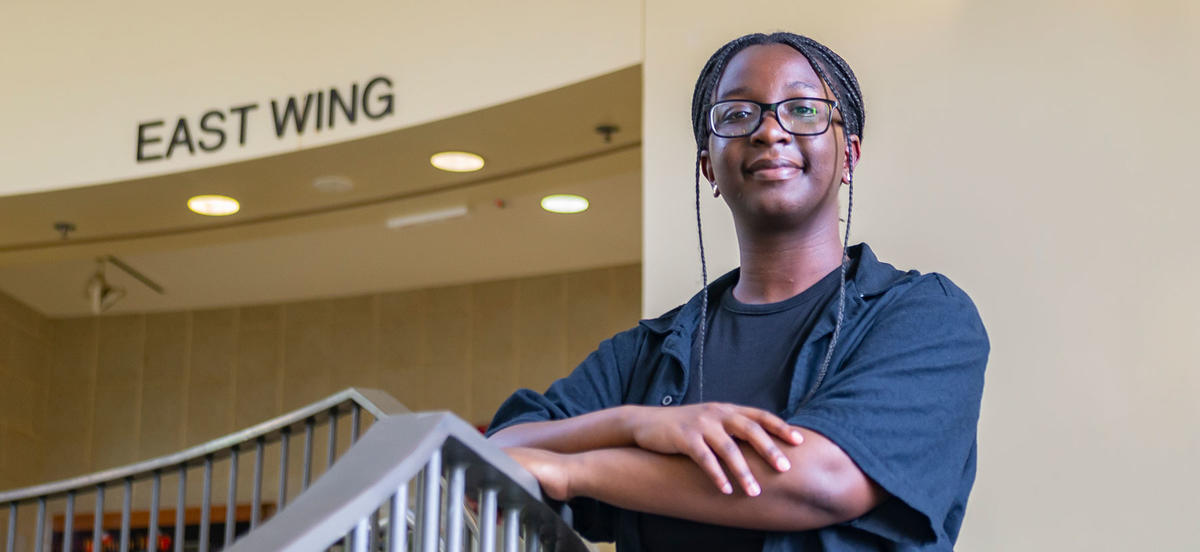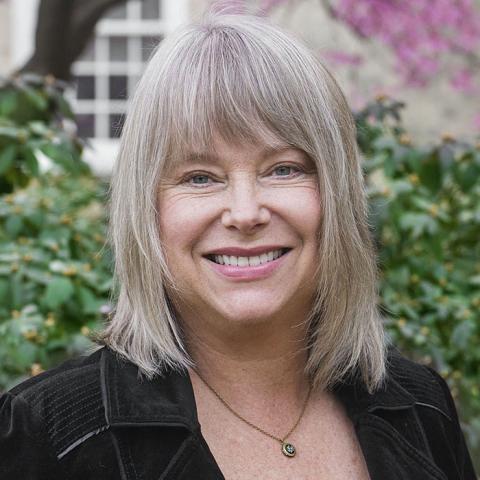Summer Centered: Khady Ndiaye '26 Explores the Properties of Ionic Liquids as a Chemistry Lab Intern

Details
In an internship funded by the Koshland Integrated Natural Sciences Center, Ndiaye is working in the lab of Assistant Professor of Chemistry Clyde Daly.
Khady Ndiaye ’26 says her interest in chemistry was sparked during classes she took toward the end of her high school career, but it took a summer internship to confirm that it’s the right major for her at Haverford.
As an intern in the lab of Assistant Professor of Chemistry Clyde Daly, Ndiaye has been exploring the properties of ionic liquids and their potential to contribute to the process of carbon capture and help fight climate change. By running molecular dynamic simulations based on past experiments conducted in computational and wet labs, she is working to understand and explain results that can inform the methods used on future experiments with an end result in mind.
During her internship, which is funded by the Koshland Integrated Natural Sciences Center, she’s learned that navigating setbacks and challenges is a critical part of advancing scientific understanding through chemistry.
“There is a great deal of background, knowledge, and skills that I have needed to develop while working in the lab,” Ndiaye said. “I have had days where I am met with the obstacle of my codes not working, but it is a learning experience to overcome them. Honestly, the more challenges I have faced, the more comfortable I’ve become with coding and experimenting with the next steps to fix my problem.”
While studying ionic liquids—molten salts with a broad range of potential scientific applications—Ndiaye has been focused on their response to carbon dioxide. Because they have been shown to be highly soluble for carbon dioxide, they are among the most encouraging materials for research into methods to capture and fix carbon.
“I believe it is of great importance to realize how negatively affected we are by greenhouse gasses,” said Ndiaye, who is pursuing a minor in environmental science. “It has increasingly become detrimental to not only us, but the Earth as a whole, so the idea of working through a possible way to decrease the levels of carbon dioxide in the atmosphere really connected to me joining this project specifically.
In Daly’s lab, Ndiaye is working alongside four other undergraduates, as well as a postdoctoral researcher, all of whom are focused on using coding techniques to meet the goals of their various projects. With the help of Daly and Kristina Streu, the postdoc, she’s built up her foundational knowledge of critical chemistry concepts while also learning how to break down and understand some of the more challenging ideas she’s come across. She’s also realized that she’s on the right track and is excited to push further in the world of chemistry.
“I hope that the more comfortable I become with the simulations, the more I can accomplish with them in terms of carbon dioxide and ionic liquids,” Ndiaye said. “There is still a way to go in the learning process but I am excited to develop my experience to the best of my ability and apply it to the project at hand.”
—Ben Seal




